What do we know, and what’s the big deal ?
Born in the 60’s means limited knowledge for a long period of time (pre-cable tv) about lot’s of things in your world…you only had a few channels to learn what you missed in school; but it was common place to see these Native American figures on a number of TV shows, and if you had a parent that enjoyed cigars or pipes, you might have even seen one in person, and if we’re truthful it was probably pretty damn scary. I mean think about it, your exposure to Native Americans at that point was mostly fictional and only showed up in westerns…now your face-to-face (or face-to-knee, we were just little bastards) with this rather large, bare chested stiff figure with a really serious face…what the hell !
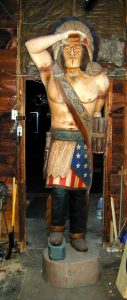
I know it tightened my shorts up…lol; but before we get to far ahead of ourselves let’s get factual and interject some history shall we, according to Wikipedia:
Because of the general illiteracy of the populace, early store owners used descriptive emblems or figures to advertise their shops’ wares; for example, barber poles advertise barber shops, show globes advertised apothecaries and the three gold balls represent pawn shops. American Indians and tobacco had always been associated because American Indians introduced tobacco to Europeans,[1] and the depiction of native people on smoke-shop signs was almost inevitable. As early as the 17th century, European tobacconists used figures of American Indians to advertise their shops.
Because European carvers had never seen a Native American, these early cigar-store “Indians” looked more like black slaves with feathered headdresses and other fanciful, exotic features. These carvings were called “Black Boys” or “Virginians” in the trade. Eventually, the European cigar-store figure began to take on a more “authentic” yet highly stylized native visage, and by the time the smoke-shop figure arrived in the Americas in the late 18th century,[2] it had become thoroughly “Indian.”
What about today ?
Well more recently we tend to see them on sitcoms (Seinfeld cigar store Indian, Cheers cigar store Indian…etc.) but in our daily lives they are becoming more scarce…for some people they’re also seen as offensive and racist figures, and even taboo for many shop owners, it’s not my place to tell anyone how they should feel about this because we all have our own way of looking at things; but this figure is truly part of tobacco history and cigar lifestyle. I would also be remiss if I didn’t talk about one of the most famous Native American carvers of cigar store Indians, Frank Gallagher…according to Wynbrier.com
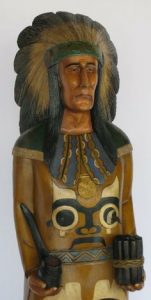
One of the most famous Native American carvers of Cigar Store Indians was Samuel Gallagher. Samuel originally carved furniture for a store owner named Gallagher. Following the custom of Indian laborers of that era, Samuel took his employers name as his own. He began carving Cigar Store Indians in the 1840’s after most of his tribe, the Man-Dan were wiped out by small pox. [Samuel has away at the time and was spared the dreaded disease] His great, great grandson Frank Gallagher is known to be one of approximately 12 true full blooded Man-Dan Indians still living. Frank, following in his ancestor’s footsteps, is a highly skilled artisan in his own right. His art?…the creation of Cigar Store Indians. One of the original Gallagher Wooden Indians is on display in the Smithsonian Institute.
The Gallaghers, continue the art of carving as Samuel would want…the right way…by hand! Frank’s father Ralph has passed however his carvings today sell in the thousands of dollars, and Samuel’s are virtually priceless.
I like cigar store Indians, I like the fact that it’s part of the tobacco history here and abroad…I like it that you can find plaster cigar store Indians, you can find cigar store Indian auctions, how to carve a cigar store Indian, you can even find cigar store Indians on Amazon. I also believe this to be an educational opportunity for those who are much younger…it’s our responsibility to make sure they’re informed and understand the connections.
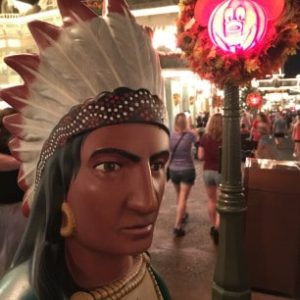
So to Jerry and Kramer, (Seinfield) Sam and Woody (Cheers), thanks for keeping them in our contentiousness.
Update:
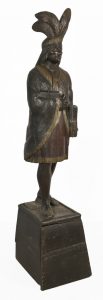
These wonderful pieces of Cigar history (Cigar store Indians) are still causing a considerable buzz…here’s a link to support this claim: CLICK ON ME

ThinkCigar…it’s a lifestyle !
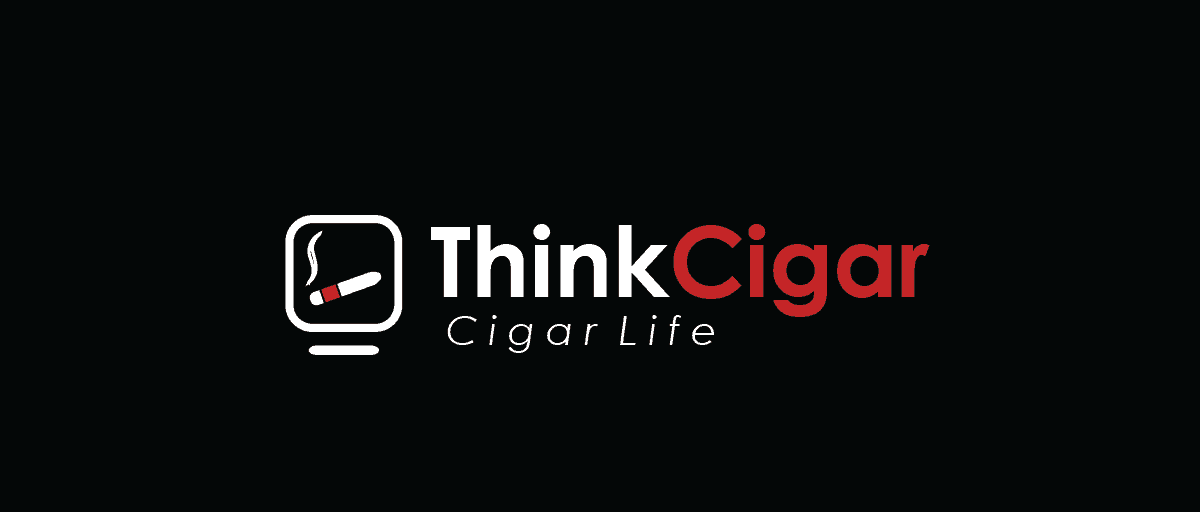
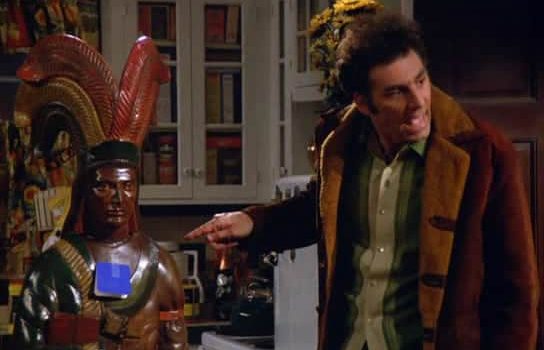
Well done. This sheds light on an important part of cigar history.
Thank you so much for your kind words, and for visiting